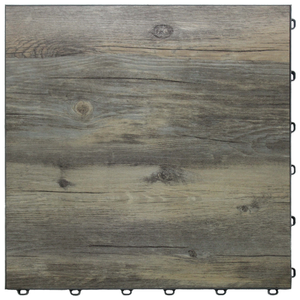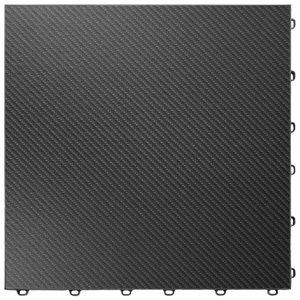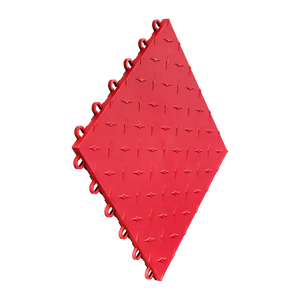Many of us dream about a floor upgrade—whether it’s the garage that’s seen better days, that workshop with endless foot traffic, or even an indoor sporting facility that craves a polished look without the headache of constant upkeep. Enter modular interlocking flooring, a solution that’s been winning hearts (and floors) for years.
But how do you know if this type of flooring is the right fit for your specific needs? In this guide, we’ll walk you through everything you need to consider when choosing modular interlocking flooring. We’ll explore real-life scenarios, pose critical questions, and even give you a short quiz to help you figure out if it’s a match made in flooring heaven or if you should keep looking. By the end, you’ll have a crystal-clear idea of whether modular interlocking flooring is your flooring soulmate—or just a fleeting crush.
Why Modular Interlocking Flooring Deserves Your Attention
The phrase “modular interlocking flooring” might sound fancy or hyper-technical at first blush, but it’s really a down-to-earth solution for a wide range of spaces. Think of it like a life-size puzzle—each tile or panel snaps into the next, creating a continuous, stable surface. It’s the same concept you might recall from building blocks as a kid, except now the stakes are a bit higher because we’re talking about your actual floor. Still, the principle is surprisingly simple and can be incredibly practical.
So, why bother switching to modular interlocking flooring in the first place? The short answer is versatility. These floors can handle everything from the wear and tear of an active garage to the demands of a professional showroom. Because the tiles connect to each other and not directly to the subfloor, you can lay them on top of a variety of existing surfaces—concrete, wood, or even other floor coverings—as long as those surfaces are relatively level.
But versatility alone might not be enough to convince you. Lots of flooring options claim to be versatile, right? Another major appeal is how these tiles often come in a broad range of colors and patterns, letting you create a custom look. Whether you want a bold checkerboard pattern in a car showroom or a subdued, single-color design in your home gym, it’s possible. And if one tile ever gets damaged or stained, you can usually pop it out and replace it without taking out an entire section.
Still, as great as that sounds, no single type of flooring is perfect for every scenario. The real question is whether modular interlocking flooring is right for you. That’s what we’re here to explore.
The Road to Hassle-Free Floors
Imagine the frustration of having a floor that cracks under heavy loads or warps when exposed to moisture. With interlocking tiles, many of those problems fade away. Each tile is designed to share and distribute weight evenly with its neighbors. This also makes it simpler to handle day-to-day abuse, whether that abuse comes in the form of rolling tool chests or the occasional car dripping oil.
If you’re someone who values a smooth, headache-free upkeep routine, modular interlocking flooring provides a pretty compelling case. It usually doesn’t require special chemicals or expensive cleaners—often, a standard mop or broom will do the trick. This low-maintenance angle is why you’ll find these floors in a wide spectrum of places, including large-scale event venues, home gyms, and bustling car workshops.
Of course, “hassle-free” is a relative term. Everyone has different expectations and definitions of easy maintenance. If you’re used to vacuuming or sweeping daily, modular floors won’t feel like a burden at all. On the other hand, if you’re looking for a floor that miraculously never needs cleaning, then no solution on Earth will meet that standard. Let’s keep our feet on the ground—pun intended—and explore whether modular interlocking flooring clicks with your specific situation.
The Big Question: Is Modular Interlocking Flooring Right For You?
Here’s the million-dollar question: how do you actually determine if modular interlocking flooring is the best fit for your lifestyle, usage pattern, and budget? The decision goes beyond simply saying, “I like how it looks.” Sure, aesthetics matter—a lot, in fact—but so do your long-term goals and the kinds of activities your floors will endure.
Let’s dive into some typical real-life scenarios to see where modular flooring thrives, as well as situations where you might want to weigh your options more carefully.
Real-Life Scenarios Where Modular Floors Excel
-
Frequent Foot Traffic: If you own a commercial space that sees a steady stream of visitors—like an exhibition center, a retail shop, or even a public workshop—durability and ease of repair are top priorities. Modular interlocking floors shine here because if a tile gets worn out or scratched, you can simply replace it and move on with your day.
-
Garage Makeover: Garages often double as workshops, storage areas, or even entertainment spaces in some households. Standard concrete floors might eventually develop cracks or stains, and epoxy can be expensive or tricky to apply perfectly. Modular flooring not only covers up imperfections but also offers a non-slip surface. It’s also comfortable underfoot, turning a cold, industrial garage into a friendlier space.
-
Home Gyms and Sports Facilities: If you have a home gym or run a small fitness studio, you need a floor that can tolerate heavy exercise equipment, foot traffic, and the occasional dropped dumbbell. Interlocking tiles with a bit of flex provide cushion, reduce noise, and are easier on your joints than a rock-hard concrete slab.
-
Temporary or Multipurpose Spaces: Planning a big event in a location that requires a robust, protective floor but don’t want to commit to a permanent installation? That’s a textbook scenario for modular interlocking flooring. You can lay it down, host the event, and then remove the tiles without damaging the original surface.
In each of these scenarios, the fast installation process and straightforward cleaning regimen often tip the scale in favor of modular flooring. For people who value adaptability, it’s a dream come true.
Real-Life Scenarios Where You Might Want to Think Twice
-
Wet, Outdoor Environments: Certain types of interlocking floors are designed for wet areas like pool decks or areas exposed to weather. However, not every brand or product is equally equipped to handle constant moisture or direct sunlight. While some specialized tiles come with drainage holes and UV protection, others might fade or warp if left in the sun for months. If your space is fully outdoors and sees heavy rainfall or intense temperature swings, make sure the tiles you choose are rated for that environment—or consider a specific outdoor flooring product.
-
Heavily Sloped or Uneven Floors: Modularity thrives on level surfaces. If you’re dealing with severe cracks, dips, or lumps in your subfloor, you might need to do some prep work—like leveling or patching—before you can enjoy a secure installation. Interlocking tiles can accommodate minor imperfections, but they aren’t a magic wand for major floor issues.
-
Spaces Demanding High-End Luxury Aesthetics: While modular interlocking flooring can look quite sleek, it may not be your go-to for an upscale lounge or a luxury boutique. If you’re aiming for a floor that screams extravagance—like a polished marble or exotic hardwood—a modular tile might not fully deliver on that opulent vibe. That said, there are premium lines of interlocking flooring that offer high-gloss finishes or wood-grain aesthetics, so it really depends on the brand and your design tastes.
-
Extremely Tight Budgets: Although modular flooring can be cost-effective over time—given its durability and easy repair—it’s not always the cheapest option to purchase upfront. If you’re on a super tight budget and every dollar counts, you might find that simple vinyl sheets or basic concrete sealants come with a lower initial price tag. However, keep in mind that cheaper fixes might cost you more in the long run if you have to replace or repair them frequently.
With these considerations in mind, you can start painting a clearer picture of whether modular interlocking flooring lines up with your priorities.
Take Our Quick Quiz to Find Out If Modular Flooring Is a Good Fit
Sometimes, you just want a quick, straightforward way to see if you’re on the right track. That’s where our mini quiz comes in. Keep in mind it’s not an exhaustive test but a fun and informative tool to guide your thinking. Grab a pen and some paper—or just note your answers mentally—and let’s see where you stand.
-
What’s your top priority in a floor upgrade?
- A. Ease of installation and low maintenance.
- B. Immediate low cost.
- C. Luxury appearance.
- D. Extreme durability for harsh outdoor conditions.
-
How often do you plan to clean or maintain the floor?
- A. Regular sweeping or mopping is fine, but I don’t want to fuss too much.
- B. I’d prefer something that rarely—if ever—needs cleaning (if that even exists!).
- C. I have professional cleaning or staff that can handle it regularly.
- D. I plan to hose down or pressure wash it frequently.
-
What kind of environment are we talking about?
- A. A garage, workshop, or indoor sports area.
- B. A high-end boutique or luxury setting.
- C. A basement or semi-outdoor space that’s a bit damp but not constantly flooded.
- D. An outdoor deck exposed to rain, snow, or strong sunlight.
-
How level is the subfloor?
- A. Relatively smooth and flat, with no major cracks or bumps.
- B. Slightly uneven, but I’d rather not spend time or money leveling it.
- C. It’s perfectly finished, so no problem there.
- D. It has significant slopes or structural issues.
-
How important is the ability to swap out or replace sections of flooring if damaged?
- A. Very important—I like the idea of fixing just one tile rather than an entire section.
- B. I’ll probably never replace anything. If something goes wrong, I’ll just cover it up.
- C. If it gets damaged, I’d likely go for a whole new look anyway.
- D. Outdoor conditions might damage tiles frequently.
-
What’s your aesthetic preference?
- A. Sleek but practical—I’m open to different colors or patterns.
- B. I just want something cheap and basic.
- C. I need that jaw-dropping designer feel.
- D. I’m fine with a rugged or utilitarian look, but it must hold up to the elements.
-
What is your budget strategy?
- A. I’m willing to invest a bit more if it means long-term savings and fewer headaches.
- B. I want the absolute lowest upfront cost, no matter the long-term consequences.
- C. Price isn’t a huge concern—I just want a premium look.
- D. It depends on how weather-resistant the material is.
Scoring the Quiz and Understanding Your Results
- Mostly A’s: You’re an ideal candidate for modular interlocking flooring. You value easy installation, straightforward maintenance, and the flexibility to replace damaged tiles. You likely have an indoor or semi-outdoor space (like a garage or workshop) that could benefit from this kind of floor.
- Mostly B’s: You’re hunting for the cheapest immediate solution, possibly without thinking about future repairs or replacements. Modular flooring can save you money in the long run, but if your primary concern is the smallest possible upfront cost, you may find alternative flooring, like basic vinyl or sealed concrete, more in line with your budget. Be aware, though, that constant repairs might eat away at those initial savings.
- Mostly C’s: Aesthetic luxury is your driving force. While premium brands of modular flooring can look great, you might gravitate more toward high-end hardwood, marble, or specialized resin finishes if money is no object. That said, if you want a blend of style and functionality, some upscale modular lines could still win you over.
- Mostly D’s: Your scenario suggests an outdoor or harsh environment with exposure to the elements or major subfloor issues. You might need specialized outdoor-grade interlocking tiles—or a completely different solution that focuses on weatherproofing and structural resilience. Make sure to check if the brand you’re considering offers UV-stable, drainage-friendly tiles specifically designed for outdoor use.
This quiz should give you an initial sense of your “floor personality.” Are you the kind of person who just wants a pragmatic solution that works, or do you crave a more elegant or weather-resistant approach? There’s no one-size-fits-all answer, but modular interlocking flooring might fit the bill if you scored heavily in the A’s column.
Understanding the Investment: Costs, Maintenance, and Installation
Now that you have a sense of whether modular interlocking flooring aligns with your priorities, let’s take a closer look at some of the practical aspects. Because, let’s face it, no matter how cool or convenient something sounds, the rubber hits the road when you start calculating the money, time, and effort required.
The Cost Aspect
Talking about cost can feel like stepping into a maze—there are so many variables to consider. Different brands of interlocking tiles come in at varying price points, often depending on factors like thickness, material composition, UV resistance, and design complexity. For example, heavy-duty polypropylene tiles built for automotive use might be more expensive than lightweight PVC tiles intended for indoor gym floors.
Still, a mid-range modular tile system might cost a bit more than basic flooring options like cheap vinyl or a standard concrete sealant. Where modular flooring can offer savings is in the long term:
- Extended Lifespan: High-quality tiles can last for many years, resisting cracks and chips.
- Less Repair Hassle: You can replace a single damaged tile instead of redoing the entire floor.
- DIY Friendly: Many people install these floors themselves, bypassing the labor costs of professional installers.
Think of it like buying a dependable car—maybe it’s not the absolute cheapest up front, but it saves you money over time thanks to reliability and reduced repairs. Whether that’s your kind of approach depends on your personal priorities and budget constraints.
Maintenance Without Headaches
How often do you want to worry about cleaning your floor? If the answer is “as little as humanly possible,” you’ll likely be happy with modular interlocking flooring. For day-to-day or week-to-week cleaning, a simple broom, vacuum, or damp mop often does the trick. Many tiles come with either a perforated surface (allowing water or debris to drain through) or a solid top that’s easy to wipe clean.
If you’re dealing with an automotive space, oil and chemical spills are a big concern. Fortunately, many interlocking tiles are made from materials that resist oil, grease, and common household chemicals. Some have specialized non-slip surfaces designed specifically for garages, so you don’t have to worry about losing your footing.
That being said, you do want to be mindful of small debris or gravel that can work its way underneath the tiles over time. Periodically lifting up the floor or sections of it to sweep out any hidden dirt is usually recommended in high-traffic or messy environments. The good news is that this is generally a straightforward process—just pop out the tiles, do a quick sweep, and pop them back in. Compare that to scraping up and reapplying peeling paint or epoxy, and you’ll see why people rave about the convenience.
Installation 101
Installing modular interlocking flooring can feel oddly satisfying—almost like finishing a giant puzzle. Most tile systems feature an edge that snaps into the adjacent tile, forming a secure connection. If you’re doing this in a standard rectangular room, you can often start in one corner and work your way across. You’ll probably need a utility knife, jigsaw, or another cutting tool for trimming tiles along walls or around obstacles. However, the rest of the process is usually straightforward enough that you don’t need professional help.
Some pro tips for installation success:
- Prep Your Subfloor: Sweep and clean the surface. Even though the tiles can cover minor imperfections, you want to remove any big lumps, nails, or debris.
- Plan Your Layout: Do a dry run to make sure any patterns line up the way you want.
- Work Methodically: Snap tiles in row by row or section by section, rather than jumping around. This way, you’ll avoid misalignment or uncovered gaps.
If a brand advertises a no-glue, no-adhesive requirement, that means you won’t have to worry about messy bonders or waiting hours for an adhesive to cure. The entire installation might just take a few hours or less, depending on the size and complexity of your space.
Where to Find Quality Modular Interlocking Flooring
By this point, you might be thinking, “Okay, I’m ready to give this a try, but where do I actually get these tiles?” Well, a great starting point is to do some research on reputable brands. Some have been around for decades, refining their tile technology and offering comprehensive warranties.
If you’re planning to install the floor in a high-stress environment—like an automotive repair shop—look for tiles specifically rated for heavy loads. If you’re more about the vibe and design, there are brands that focus on aesthetics, offering all kinds of colors and custom logos.
Finland’s Go-To Source for Swisstrax: Tallitkuntoon
If you’re located in Finland, there’s a handy option for getting your hands on high-quality modular interlocking flooring: Swisstrax is available from Finnish authorized importer and reseller Tallitkuntoon, which you can visit at www.tallitkuntoon.fi. Swisstrax is a recognized name in the modular flooring world, known for its robust construction and range of color choices. Whether you’re giving your garage a facelift or transforming an industrial space, you’ll find Swisstrax tiles that can handle the job.
One of the perks of choosing a local distributor is that you can often get personalized advice. You can ask questions about which tile is best for cold winters, or how to handle installation in a heated indoor environment. Plus, if any tile ever needs replacing, sourcing that spare part is quicker and simpler when you’re dealing with a nearby supplier.
Conclusion: Next Steps Toward a Satisfying Flooring Solution
Flooring often goes overlooked—but it’s literally the foundation of how a space looks and feels. Whether you’re standing in your garage, hosting guests in your workshop, or welcoming customers in a public venue, the right flooring can make a world of difference. With modular interlocking flooring, you’re getting a strong contender for easy upkeep, fast installation, and a wide spectrum of style possibilities.
Still, it’s not about picking any tile off the shelf and hoping for the best. The key is to align your choice with your unique situation. If you’re mainly concerned about durability under heavy vehicles, investigate tiles specifically designed for automotive use. If aesthetics matter most, look at collections with textures and finishes that complement your décor. And if you have an outdoor space, be sure to find a tile that can weather sun, rain, and temperature extremes.
When in doubt, go back to the quiz. Reflect on your daily habits, budget, and style preferences. If modular interlocking flooring checks most of your boxes—and you’re intrigued by the idea of snapping tiles together like an adult version of a building block set—then it might just be the perfect fit. And remember, if you’re in Finland, you have Tallitkuntoon ready to help you source Swisstrax flooring tailored to your needs.
We all want that perfect floor—one that looks great, holds up against our daily routines, and doesn’t require a second mortgage or a PhD in home renovation to maintain. Modular interlocking flooring could be exactly that, offering a balance of practicality, style, and longevity. And once you experience the satisfaction of snapping those tiles into place, you might just wonder why you didn’t make the switch sooner.
So, are you ready to take the leap? If so, you now have the map—complete with a mini quiz, crucial questions, and real-world considerations—to guide you toward a floor that you’ll love walking on (and maybe even showing off) for years to come. From garages to fitness studios, from workshop floors to commercial showrooms, modular interlocking flooring has proven itself as a reliable, enduring option. If that sounds like music to your ears (and your feet), then perhaps it’s time to swap out the old floor for something that clicks, literally and metaphorically.
Take a closer look at what’s available on the market, consult with experts if you need a second opinion, and above all, envision how the right floor can transform your space. Because while walls can be repainted and furnishings can be rearranged, your floor remains the constant stage on which your daily life unfolds. Make it one you can count on.









